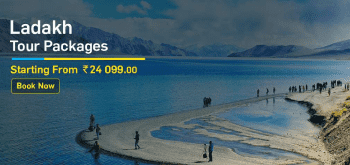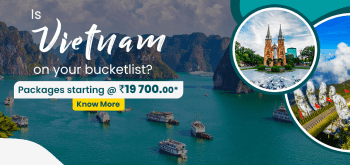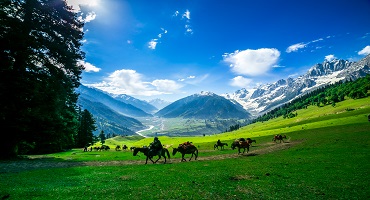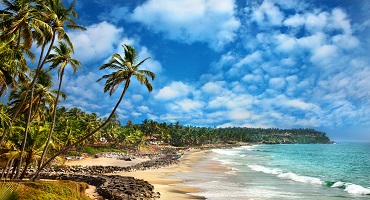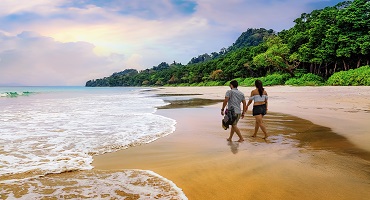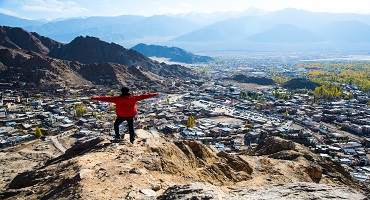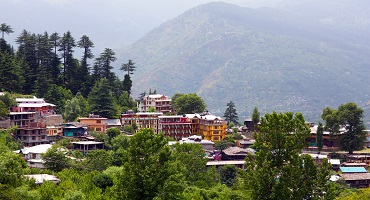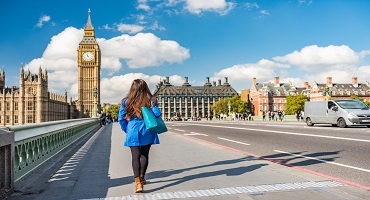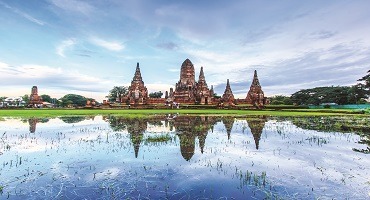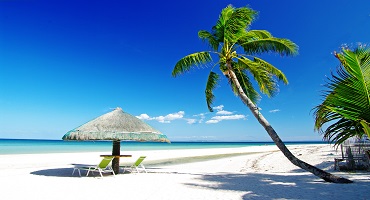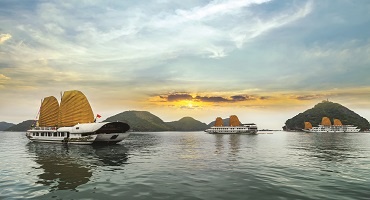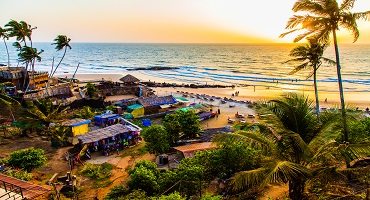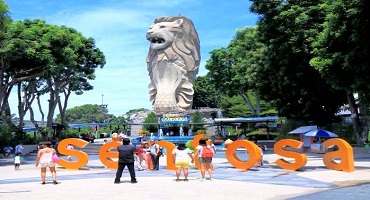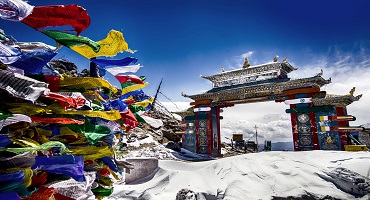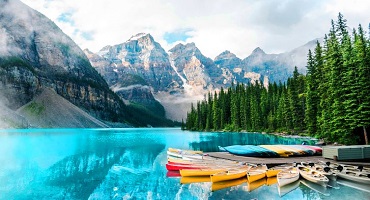When one thinks of Canada, everyone automatically conjures up images of beautiful vistas, craggy mountains, vast coastline, and the Niagara. But there is so more to the place than that. Canada has an amazing culture and it believes in people’s happiness and equality first. The Canadians love visitors and whip up some amazing meals too. Its modern cities are a fine example of flawless infrastructure and an eagerness to make everything work. Whether you want a modern experience, or wish to get away from it all and head out into the wilderness, Canada has a plan for everyone. It’s up to you to choose what you wish to take away from it.
|
Canada Tourism-A quick overview
|
|
Country
|
Canada
|
|
Official Language
|
English, French
|
|
Dial Code
|
+1
|
|
Population
|
37,602,103 (2019)
|
|
Currency
|
Baht
|
|
Time Zone
|
(GMT-3.5 to -8)
|
|
Area
|
9,984,670 square kilometres
|
Highlights of Canada:
Monuments of Canada
Canada is famous for its unspoilt beauty and unending natural vistas, which have become the symbol for the nation. However, the country also has a unique vibe that is captured beautifully in all its man-made monuments, some of them quite recognisable landmarks by themselves. Each of these brings its own charm to the place and gives reason for more visitors to come to these shores. When in Canada, don’t miss a chance to drive on the Confederation Bridge over icy waters. Do visit St Joseph’s Oratory, known to be the third-largest dome in the world. Parliament Hill displays excellent architecture and design. And how can one miss the CN Tower in Toronto.
Natural beauty of Canada
Canada offers a bouquet of amazing outdoor wonders. The world’s second-biggest nation is visited by countless tourists every year, attracted by the endless variety of landscapes and spectacular nature. Here you will find yourself awed by sky-high mountains, you will feel the majesty of shimmering glaciers, lose yourself in the thick rainforests and discover tranquillity at the remote beaches across its massive coastline. The Canadian side of the Niagara is said to be more beautiful, and you’ll have to take our word for it, but only until you actually go there yourself. If you are an outdoor person, then Canada is a wonderful holiday that is just waiting to happen.
Wildlife of Canada
Canada is huge, and its varied terrain also offers a huge diversity of fauna and flora. From the largest ones like grizzly bears, polar bears, whales and the moose, to smaller animals, like the grey wolf, marmot and the wolverine. The country, with more than 200 individual species of animals, will not disappoint. Birdwatchers will love it here, too. There are over 462 types of birds, each more beautiful than the other, making every sighting a splendid opportunity for the shutterbug in you. From hummingbirds, quails, flycatchers and mimids, to vultures and goose, Canada is truly a feathered paradise. The rich boreal forests too contain exotic plants and flowers that are sure to take your breath away.
Step off the beaten path and head into the many natural reserves that dot the country, and if you are lucky, these beautiful creatures will decide to grace you with their presence.
Cuisine of Canada
Canadian cuisine is primarily a fusion of cuisines from many other cultures. While some dishes, such as poutine (fries, cheese and gravy, with an assortment of meats if you wish), can be classified as originally Canadian, the country is mostly considered to be a smorgasbord of flavours and tastes. The country borrows heavily from English, Scottish and French cuisines, which form its traditional base. Over that add a rich layer of European, Asian and Caribbean flavours that has gone on to create the unique Canadian table spread that everyone relishes. While in Canada, do sample the bannock (a baked/ fried bread), butter tarts (the name itself is so delicious), lobster rolls and bagels. Satisfy that sweet craving with Saskatoon berry pie, pouding chômeur or pick up a maple toffee – soft and gooey!
Interesting Facts about Canada
- At Narcisse Snake Dens conservation area, you can spot thousands of snakes in one place, looking like a tangle of electrical wires.
- The Alberta province in Canada has no rats within its borders, and the guards make sure none enter.
- The town of Churchill, Manitoba, has as many bears as it does people, a thousand each.
- Enterprising business people scoop up massive floating masses of ice broken off from Greenland glaciers to help in making wine, beer, vodka, and skincare products.
- Canada welcomes all, including aliens. Back in 1967, Canadians built a landing pad for a UFO ship in St. Paul, Alberta.
- Canada has the world’s safest highways for animals with numerous underpasses and overpasses on all the national highways.
- You weigh 1/10th of an ounce lighter in Canada’s Husdon Bay area. Perfect for when you’re feeling down.
- Canada exports a million barrels of oil to the US daily, even more than all the Gulf nations’ oil supplies to US.
Location of Canada
Canada stretches all the way from the Atlantic Ocean to the east and the Pacific Ocean to the west. It occupies a large chunk of the North American continent. To the south it shares borders with the United States of America and this sharing continues to the northwest, where it rubs shoulders with the state of Alaska. To its north lies the Arctic Ocean. Canada is the world’s second-largest nation, if you consider its territory from the Pacific to the Atlantic, and upwards to the Arctic Ocean.
Best time to Visit Canada
Canada is at its most welcoming during fall, from September through November. The weather starts to get cool but isn’t freezing cold yet. But the best part is that the summer crowd has left, leaving you to enjoy the fall colours by yourself. This is also when you get better rates on accommodation and travel packages. Canada celebrates its fall festivities, such as pumpkin, apple, and wine festivals, giving you an opportunity to take an offbeat vacation.
How to reach Canada
There are several leading airlines that operate direct flights between India and Canada. The major airports in Canada are Ottawa, Toronto, Montreal, Calgary and Vancouver. With nearly 200 weekly flight options, you can plan your holiday and book your tickets well in advance for your upcoming vacation.
History of Canada
Canada has been ‘discovered’ several times in history. The earliest were the settlers who came in from the Bering Straits and settled here thousands of years ago. The Inuit hunted seals, walrus and whales, and land animals. They also grew crops of beans, maize and sunflower seeds. Many Vikings and Europeans came to Canada and claimed the land under various kings’ names. However, very soon the land was forgotten, until some 500 years ago when Europeans believed they ‘discovered’ what they thought was East India.
Traders, missionaries and soldiers arrived, bringing goods from far and unfortunately, diseases that the locals had no resistance to. However, the bond formed between the Aboriginals and the Europeans laid the foundation for Canada as we know it today.
Planning a trip to Canada? Go through our carefully-curated Canada tourism packages and pick a holiday that works best for you. We’re sure you won’t be disappointed.


